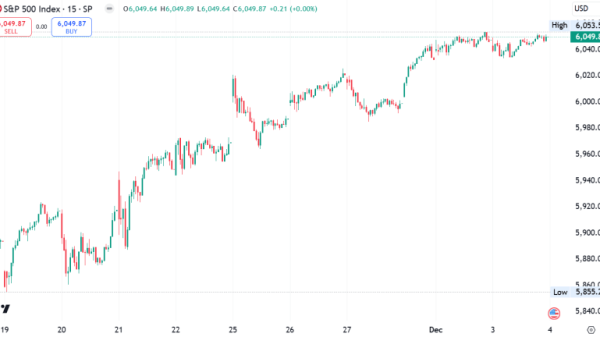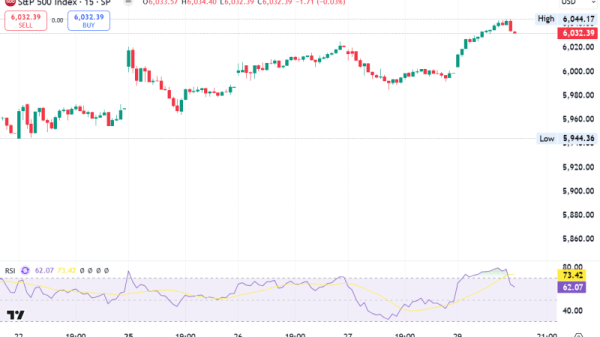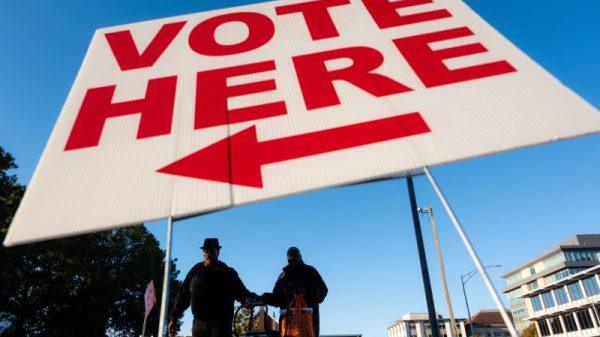In the third quarter of 2024, Raiffeisen Bank International (RBI) CEO Johann Strobl announced a consolidated profit of €156 million with a return on equity (ROE) of 8.6%.
Despite a challenging operating environment and geopolitical tensions, the bank maintained stable core revenues. However, loan growth remained flat, and net interest income (NII) witnessed a slight decline. Operating expenses increased, affecting the cost/income ratio.
The bank is managing its exposure to the Russian market and anticipates adjustments to its CET1 ratio by year-end. The outlook for 2024 includes stable NII and fee income guidance, with a revised ROE forecast due to risks in Poland and Ukraine.
Key Takeaways
Consolidated profit of €156 million with an 8.6% return on equity.
Net interest income down by 1%, while core revenues remain stable.
Operating expenses increased by 6%, leading to a cost/income ratio just under 51%.
Reduction in Russian operations resulted in a 23% decline in loans to customers.
CET1 ratio expected to adjust to around 14.7% by year-end.
Risk costs anticipated at 35 basis points for the year.
Ongoing legal uncertainties related to Swiss franc mortgages in Poland.
Company Outlook
NII and fee income guidance for 2024 remain at €4.1 billion and €1.8 billion, respectively.
The return on equity forecast has been revised down to 7.5%.
Risk costs for 2024 are projected to be no more than 35 basis points, increasing to 40-50 basis points in 2025, excluding Russia and Belarus.
CRR3 regulations expected to provide RWA relief starting January 2024.
Bearish Highlights
Loan growth was flat, with a significant decline in loans to Russian customers.
Net interest income is sensitive to interest rate fluctuations, with a potential €150 million negative impact from a 100 basis point drop.
Concerns over provisions for Polish FX loans, which may persist into 2025 and 2026.
Bullish Highlights
Management overlays of over €490 million provide a buffer for risk costs.
Releases of Russian-specific overlays due to ongoing business reduction plan.
Retail replication portfolios could see an additional positive NII impact of €50 million to €100 million.
Misses
NII within the Group Corporate & Markets division dropped due to margin pressure and reduced loan volumes.
Cost of risk for Q4 is forecasted to be €150 million to €170 million.
NII is anticipated to be lower than €4 billion in 2025.
Q&A Highlights
Provisions cover over 90% of active customers involved in foreign currency litigation in Poland.
Stage 3 loan loss provisions exceeded €100 million, mainly due to the trading sector’s struggles.
Macroeconomic weakness, particularly in Germany, is a significant concern for corporate lending volumes.
Raiffeisen Bank International’s earnings call underscored the bank’s resilience in the face of operational challenges and uncertain geopolitical landscapes. While the bank grapples with the impacts of its Russian operations and interest rate sensitivities, it remains cautiously optimistic about its strategic positioning and ability to manage future risks.
The bank’s CEO and executives have outlined a clear path forward, with a focus on maintaining stable core revenues and managing provisions for potential risks. As RBI continues to navigate the complex financial terrain, investors and stakeholders are closely monitoring its strategic adjustments and financial health.
Full transcript – None (RAIFF) Q3 2024:
Operator: Good afternoon ladies and gentlemen and welcome to the Q3 2024 Results Conference Call of Raiffeisen Bank International. Today’s conference is being recorded. At this time, I would like to turn the conference over to Mr. Johann Strobl, Chief Executive Officer. Please go ahead, sir.
Johann Strobl: Thank you very much. Good afternoon, ladies and gentlemen. Thank you for joining us today for our third quarter results call. For the first 9 months of 2024, we can report consolidated profit, excluding Russia and Belarus, €156 million for an ROE of 8.6%. With decent earnings in the quarter and stable RWAs, the CET1 ratio for the group under worst-case scenario in Russia improved to 15.3%. This is a nice sprint, of course but our guidance for the full year remains in the 14.7% area. I will touch on this in more detail in just a minute. On Slide 5; loans to customers were pretty much flat in the quarter with some loan growth in our networks and a very quiet third quarter for GC&M. Core revenues are broadly stable with NII decreasing, albeit not as fast as we had expected. And fee income is holding up well despite the very slow lending activity. Operating expenses are up 6% versus the first 9 months of 2023 and the cost/income ratio for the period just under 51%. Before we look at these trends in closer detail, allow me to update you on the progress we are making in Russia. Last quarter, we shared with you the key measures we have taken to accelerate the reduction of our business there. These measures have now been fully implemented and we are already seeing tangible results. Loans to customer decreased 23% in the quarter. With very few exceptions, we’re not lending. Our loan book will shrink according to the maturities in our portfolio. Some of the drop that you see in these results is of weaker ruble in the quarter. Nevertheless, I’m satisfied that even in ruble terms, on our loan book reduction is ahead of schedule. Current accounts have also decreased significantly in the quarter. Some of the outflows may be linked to our restrictions on payments which took effect in September and I cannot guarantee that deposits will continue to decrease at the current pace. We will continue to exercise what levers we have to reduce deposits, including pricing at 0% and maintenance fees where possible. Term deposits have already nearly run off and we are not accepting new ones. We have implemented a near blanket ban on outgoing payments in foreign currencies and our volumes have collapsed accordingly. We’re still working our way through a very small list of customers with whom we may do business going forward. Again, this will be large internationally active customers. And for each of these, we will complete a new individualized compliance statement. We continue to explore ways to exit partially or fully and until we do, this accelerated business reduction is our central scenario. At the end of the summer, we made an announcement regarding the court proceedings which have led to a ban on the transfer of Raiffeisen Bank Russia shares. The only comment I can make is that these proceedings will add further delays to our exit timeline. There is nothing more I can add at this stage. One last comment on this slide and the RWA development in Russia. As we discussed last time, the shift of excess liquidity to the CBR came with higher risk weightings compared to where we had placed our excess liquidity previously. This shift is largely completed and going forward, there is not a big difference between the risk weighting in our loan portfolio and on deposits with CBR. This means that as the loan portfolio amortizes and liquidity is moved to CBR, we do not expect significant upward pressure on RWAs. Moving to our next slide; core revenues in the quarter are slightly down. Net interest income, excluding Russia and Belarus, is down 1% and the trend is clear. With that being said, net interest income this year has not decreased nearly as much as we initially feared and specifically, the 2 businesses where we feel the biggest drops, GC&M and Hungary, the decline has been more benign than expected. For the full year, our guidance is confirmed around €4.1 billion. Fees are broadly stable in the quarter for the group, excluding Russia and Belarus. All main products are stable in the quarter and in the first 9 months of the year. We’ve also confirmed our guidance here at around €1.8 billion for 2024. On my next slide, let’s take a look at the balance sheet development in the quarter. As I mentioned earlier, loan growth this quarter was very muted. Romania was the bright spot this quarter, where the corporate book was up 5% and the retail book up 3%. In our other network units, growth was modest. In head office, however, new business origination was very weak which combined with scheduled maturities led to a net decrease in the quarter. Looking at it by product, new mortgage and personal loans origination again showed signs of life and confirming the positive trends already seen in Q2. New corporate origination was down in the quarter, largely in head office, as just mentioned and in Hungary as well. On the deposit side, while we do see a drop in the quarter, excluding Russia and Belarus, upon closer look, we see that for the most part, this is coming from non-retail deposits. The drop in corporate deposits was primarily in head office, Ukraine and Hungary. Corporate deposits are usually more price-sensitive and the excellent liquidity across the group means that we do not necessarily have to compete to retain these deposits. More importantly, deposits from households were up 4% in the quarter in euro terms and 1% excluding the FX conversion which leads us to my next slide and an overview of liquidity across the group which is very stable in the third quarter. Liquidity coverage ratios for the group, key network units and head office are all stable in the quarter at very comfortable levels. Let’s now look at the capital slide, starting with the CET1 development in the quarter which is stable at 17.8% for the fully consolidated group. In this 17.8%, we have accrued a dividend based on the regulatory guidelines using the payout of the previous year. This is no indication for our dividend plans for the fiscal full year 2024. And like in previous years, we will make a proposal with our preliminary Q4 results which is based on our CET1 ratio, excluding Russia. By year-end, we expect to be around 17.3%. This drop is largely coming from the yearly recalculation of operational RWAs and to some extent, higher market risk RWAs. We do assume some loan growth in Q4 as well. Let’s move to Slide 12 and our CET1 ratio in a scenario where the Russian subsidiary is lost. From 14.7% in Q2, we now stand at 15.3% and an MDA buffer of 344 basis points. RWAs were down in the quarter which combined with decent retained earnings explains the increase. In Q4, the recalculation of operational RWAs and assumed loan growth that I have just mentioned will also impact this ex-Russia CET1 ratio. This is why we can already guide for a reversal to around 14.7% at year-end. Moving to Slide 13, current capital ratios and requirements; only one comment from me here. From January, the OCI buffer increases by 25 basis points, bringing our combined buffer requirements to 588 basis points. I won’t bore you with the details, simply that this relates to a temporary cap on additional buffer requirements introduced in 2022 which has now been removed. On Slide 14, our MREL ratio which like last quarter is comfortably above its requirement. All of our local resolution groups are also comfortably above their requirements. 2024 has been a busy year for us in capital markets with senior issuance out of the Czech Republic, Slovakia and Hungary. Three senior bonds placed out of head office, including our first 2 non-preferred seniors and more recently, a very successful Tier-2 placement. Looking to the year ahead, we expect another 3 senior benchmarks out of Vienna with the split between preferred and non-preferred still in discussion. Moving to the macro slide. Here is the update of our Raiffeisen research which I think, to a large extent, is a confirmation of what we have seen in recent months, of course, with some adjustments. And these adjustments, I will not go through it. We see improvements in 2025 in almost all the markets. We see some impact, at least the way I read it from the weak development in Germany for countries which have a close link to Germany, Western Balkans with a different economy structure are better, of course. And on the inflation and the key rate forecast, we have seen the decline in inflation in all the countries. This will continue at a slower pace in most of the markets. In some, there will be even an increase, probably to a large extent, driven by tax increases. And followed or derived from that, you find also our key rate forecast for the most important markets for our network banks. And now to my final slide, our updated outlook for the full year 2024. NII is confirmed at €4.1 billion, even after the adjustment to the treatment of intra-group transactions which we announced 2 weeks ago. On a like-for-like basis, this confirms the positive development in the NII which throughout 2024 has proven to be more resilient than we expected at the start of the year. Fees are confirmed around €1.8 billion, as our OpEx at €3.3 billion. Risk costs might be up to 35 basis points. The return on equity is revised down to 7.5%, driven by the risk of further provisions in Poland and an expected windfall tax in Ukraine in Q4. And with this, I hand over to Hannes.
Hannes Mosenbacher: Thank you, Johann. Good afternoon, ladies and gentlemen. Allow me a few words to summarize the developments this quarter. First of all, the operating environment remains fragile. The economic recovery is still on track, as you see from the macro forecast that Johann just shared with you. Inflation appears contained and the lower interest rate environment should also provide some relief. At the same time, corporate balance sheets have exhausted many of the buffers which were built up during the pandemic and in the brief recovery that followed. And closer to home, both Austria and German’s macroeconomic indicators continue to disappoint. On the positive side, employment and consumer demand have supported the recovery. Besides the economic weakness in our region, geopolitical tension can flare up at any time with consequences on energy prices and supply chains, among others. With that being said, the quality of our portfolio, as measured by internal ratings and default probabilities has remained remarkably stable over the past 12 months and I remain confident in our underwriting standards. Risk costs remain around 30 basis points year-to-date and we can guide for no more than 35 basis points for the full year of 2024. In this environment, looking ahead to 2025 is no simple exercise. But I know that you anyway will ask and so my best guess for risk cost next year would be in the range of 40 to 50 basis points, excluding Russia and Belarus. This will bring us close to our normalized level of risk costs before any usage of potential management overlays. Mentioning overlays, excluding Russia and Belarus, we have over €490 million which is around 1 years’ worth of normalized risk costs. This number was stable in the quarter with slight releases coming from lower interest rates in Hungary as well as a small amount allocated to actual defaults in Croatia. You will have also noticed the decrease in overlays in Russia and Belarus which is simply a function of the accelerated decrease in credit exposure. We are making good progress on our business reduction plan. And as this progresses, we have to expect continue to release further of these Russian-specific overlays. Reading through the first round of research notes, I agree. Poland remains a painful topic for us this year and I fear that we will need to take further provisions in 2025 and perhaps even 2026. You will have seen in the following risk slide the breakdown of our cases. For the active Swiss franc part of the portfolio, we have taken substantial provisions and already resumed that almost every case ends up in court. For this part, I would venture to say that we are well covered. Our model-based provisions already capture over 90% of the cases. And for each of these, the model assumes a near 100% loss. The uncertainty going forward comes from the repaid Swiss franc portfolio as well as the euro-denominated mortgages. For these, we have still only seen a very few court cases and therefore, our forward-looking models contain a higher degree of uncertainty. Furthermore, the trends in court have stabilized. Inflow of active Swiss franc cases have declined. Repaid Swiss francs are stable at the very low level and euro cases are for now via review. Finally, there may be some relief from our settlement program. We are now rolling it out to more and more customers. The benefits go beyond the sole annulment cost and include savings on the court fees, legal bills and penalty interest rates. Dear all, before we take your questions, let me touch on RWA development going forward. First of all, as Johann mentioned, we will see an increase in op risk-related RWAs in Q4 of up to €2.5 billion to €2.6 billion. This is simply because under the standard model, op risk RWAs are a function of operating income averaged over 3 years period. As a reminder, Russian operating income is still fully considered in this model. And in the coming months, 2024 will replace 2021 in the 3 years average. Russian operating income, so the op risk model currently consumes around 65 basis points and this will increase to around 80 basis points at year-end. Finally, from January, CRR3 will become binding for all European banks. For RBI, in its current form, this actually means a day 1 RWA relief of around about €4.2 billion and about €3.7 billion for the group without Russia and Belarus. As the transitional features roll off, the fully load impact will still provide a net RWA relief in the range of €2.3 billion for the group ex-Russia. Main positive drivers of the CRR3 relief in credit risk includes removal of the IRB scaling factor, the reduced unsecured LGDs and reduced credit conversion factors. Ladies and gentlemen, this is my brief risk update for Q3 and we are now eager to take your questions.
Operator: [Operator Instructions] Our first question comes from the line of Gabor Kemeny with Autonomous Research.
Gabor Kemeny: A couple of questions from me. First one is on Polish FX which, yes, I mean, you mentioned it remains a significant drag on your profitability. I think something like up to 6 percentage points of core ROE this year. Can you help us scale how you think about the charges going into 2025? And to what extent shall we expect the charges to drop next year? I mean, besides the repaid borrowers, it would be interesting to hear your thoughts on some — I understand some borrowers are being slow with repaying the principal in case of the court cases. Any thoughts on that would be helpful. And my other question is on Russia. I mean, yes, it looks like a sale is not going to be possible in the foreseeable future. I guess, how do you think about your options here? What would need to happen for you to consider a full write-off, I suppose, walking away from the country?
Hannes Mosenbacher: Gabor, thank you for your question. I think giving a strong guidance for you guys, I think I would be very shy on doing so. What is our way of thinking and this is what I’m being willing to share with you. As I said, I think we are pretty confident that we have well covered the pillar what we demonstrate here and shown here as an active clients with a very high coverage ratio and also assuming a certain loss assumption which goes up to 100%. Where there’s still 2 pillars which are a little bit more difficult to assess. This is the rebate pillar. And the other one is, of course, we also will be now more pronounced on the settlement program. The best guidance I would be willing to give you at this time, that in 2023 and 2024 we have been surprised to the upside of our initial thoughts. So hopefully, next year, 2025, we will come in below 2024 numbers.
Johann Strobl: Thank you, Hannes, to your question on Russia, what are our options? As I said in my speech, what’s currently happening at court is, of course, delaying our progress in trying to find a proper exit. And you remember, we always have been speaking about sale at least of the majority or maybe even 100%, probably a little bit less likely than the 60%. So, this is delaying. I mean, I understand your question, what about walking away which would simply realize the zero scenario. I see your point that not receiving any dividend and just having a negative impact on the group is to be considered which we do. We are not there yet to walk away without any compensation but I can only repeat and confirm we are significantly reducing our business activities in the bank in Russia which from our perspective means that we are significantly also reducing and this is the reason why we do it, any spillover risk, any sanction risk whatsoever.
Gabor Kemeny: Just a small technical question, please, on the Russian NII. The increase here, is this a function of Raiffeisen getting more compensation on the balances to the CBR? And if so, shall we assume further increases here as rates have been increasing?
Johann Strobl: Yes. Gabor, indeed, you are right. This is part of our, let’s call it, de-risking and also implementation of some of the ECB requirements which meant that we move all the excess liquidity from the various places where we parked it being financial institutions or the MOEX, especially. We bring it to Russia, to the Central Bank in Russia and this had a significant impact just from the structural part, bringing all these assets to a higher interest rate level. And yes, we will see how this will develop as we assume that with deposits outflowing, of course, the surplus liquidity over time will be reduced. But indeed, what you see in Q3 is exactly that impact. As it also, as I said, is the increase from the RWAs which comes from that as well.
Operator: Our next question is by Lee Street with Citigroup.
Lee Street: I have 3, please. Firstly, just in terms of the court proceedings for the Russian entity which embargoes the shares, is there any timings or next steps that you’re able to just give us some context on when we might hear some news? Secondly, did I understand you correctly that as your Russian loan book shrinks and you put more cash at the Russian Central Bank, that essentially the Russian risk-weighted assets are going to stay roughly around the same level from here as we look out? So, our Russian RWA is going to stay about flat? And then finally, obviously, if you’ve looked in the past, any comments on your additional Tier-1? Obviously, the market’s rallied a lot in terms of your thoughts there, potentially looking to do something for your existing deal and do an exchange or tender, etcetera.
Johann Strobl: Yes. Thank you for your questions. My understanding is, today, there is another court session on STRABAG issues, where unfortunately, we believe for the wrong reasons why involved there. We made our position clear. We’ll see how it will be dealt with today. So, this is the one which actually is ongoing on the transfer ban of our shares. There is a second instance at court early of December as it’s currently scheduled. And then the RWAs in Russia, what you were saying, this comes from the 100% risk weight of the CBR, whereas banks and corporates, where we replaced it before or the mortgage, they rather had around 20% or whatsoever RWAs. So, if you think about looking forward, I think if the repayments of the loan book is considered where we have on an average of maybe 80% or close to CBR, so from that, there will not be a big impact anymore. And I would assume that the liabilities which is the core of the RWAs and the excess liquidity is, of course, reducing. For a while, I guess that the bank will still have a nice earning. And so, as we don’t get dividends, this of course, contributes to the liquidity and to the RWAs. And our thoughts on AT1, if I got your question correctly, for us, it’s important to replace the existing non-call instruments and provide investors with new instruments. And I can add very little to that at this point.
Operator: We’ll go next to Benoit Petrarque with Kepler.
Benoit Petrarque: So, the first question is on the net interest income. Just wondering if you could update us on the NII sensitivity as we expect a drop in interest rate next year? And also, how should we think about ’25 NII taking into account the movement of interest rates, we will see loan growth. I think also you mentioned some pickup in retail loan growth. So, given all that, how do we think about — we should think about ’25? And probably €4.1 billion could be a bit on the challenging side but just wanted to check that with you. Second question is actually on the drop of NII in the Group Corporate & Markets division in the quarter. Just wondering here what it relates to, whether it’s a timing issue and funding costs will also come down at a later stage? So that’s the second one. And the third one, maybe on the cost of risk. Your guidance up to 35 bps implies probably €150 million, €170 million cost of risk for the fourth quarter which is a quite high figure. And is that seasonality or just also deterioration of asset quality expected in the fourth quarter?
Johann Strobl: So, thank you for your questions. Let me start with the sensitivity. I think it’s standard in — with this question, at least the way I understand that we are talking about a shock event and the impact on NII over the next 12 months. And yes, to give you the sensitivity here. And as we’re talking about decreasing environment, I speak about minus 100 basis points in local currencies as well as in euros. And you might then do your assumptions on the total drop of the rates. So, if we exclude Russia and Belarus on total, we would expect €150 million negative impact from drops in the various markets. And the 100 basis points, I tell you the biggest one. So, it’s Czechia, the bigger part here. So, some 25 or so around 20 would come from the local currency, slightly less in Hungary with 40%-euro, 60% local currency; Slovakia, higher, more sensitive, so 27% to 30%; Croatia, around 10, 11; Romania, 28 with the bigger part, so around 20 in the local currency. Serbia, also sensitive, €10, 16 in local currency; and Ukraine, around 5 in Euro and 11 in the local currency. I don’t know if you still have Russia on your card as well. Yes, of course, as we don’t pay interest on the liability part, it goes one-to-one. And so, we have a sensitivity of around €75 million out of the Russian business. So, this was the sensitivity and I think this will help you also in guiding or having your own calculus on the NII guidance also for 2025. So, if you add up your expectations and some asset development, one can say that it will be lower than what we see for this year, had in the forecast and the guidance, so below the €4 billion one might for sure expect. And then there was a question from you on what are the causes of the drop in NII, in the GC&M. I hear you have, yes, margin pressure in the corporate loan book. And of course, also, you have to consider the lower volume in this area. And I would say the other impact which covers two-thirds of what you see in the decline and the others internal allocation of capital benefits or some others but you also have to get the full picture on that. And I hand over to Hannes for the guidance in the risk area.
Hannes Mosenbacher: Well, cost of risk guidance, of course, you’re right, you could say and you could sum it up to seasonality. But what is the way of our thinking. The one is you always must keep in mind a single default event, then you have the normal run rates on the retail side and we might be tempted to increase here and there may be a management overlay but also to increase here and there maybe the coverage ratio. And please always keep in mind that we are still having an operating bank in Ukraine. And of course, also here event risk could drive risk costs.
Operator: Our next question is by Riccardo Rovere with Mediobanca (OTC:MDIBY).
Riccardo Rovere: I have a couple, if I may. The first one is — the first one is again, sorry, on Russia. The loan book now is fairly small. It’s less than €5 billion and deposits is €11 billion and you chopped them by kind of 25% in a quarter. Now would ECB be okay with, let’s say, only with 0? So, zero loans, zero deposits, zero everything. And the day you get to zero deposits and eventually zero loans, it will take a while maybe but let’s assume it happened tomorrow. What would happen? You would be left only with the local equity, local buildings, then you would need to charge restructuring charges for the employees? Or what would happen if you all of a sudden when all the balance sheet became kind of zero, aside from the buildings and the equity?
Johann Strobl: Yes. Riccardo, this is a rather difficult question, speculating on when the ECB will be satisfied finally. But I guess — I should not guess. I assume currently, they are okay that we implement what we have so far. And it will take a couple of years till the full loan book is running off. Of course, we are now in a very high-rate environment and there is no reason for customers to refinance at this high-rate environment. We have acquired most of these loans quite a while ago when the rates have been significantly lower. So, I think what you usually assume this prepayment behavior, this is not visible today and will not be there for a while. I mean, yes, at some point, we would then also deal with other topics, difficult to say to which level the deposits will drop. But if you now say the requirements to shrink the loans by 55%, what I think was also part of your question, this was for a period of 5 quarters. So, this was not the end of the story. But based on Q3 ’23 loan book, this was the assumption of the runoff and this we might achieve. So, it will take some time to be at zero. And of course, everyone who might ask what kind of bank is this which offers a very, very limited services, a very limited bank operation in a rundown mode. This I have to confirm.
Riccardo Rovere: But Johann, if you right to zero, let’s assume you get to zero, then what happens? Then you would need to close down the operations because, let’s say, you have 9,000 employees more or less in Russia, if I remember correctly, you must have buildings in Russia. That is what you would be left with plus the equity, of course. But then you would need just to shut down the whole thing. I’m just guessing, just thinking because the deposits went down significantly in the quarter.
Johann Strobl: Here, I would say, look, the bank has €5 billion to €6 billion of equity now. So, it’s this alone in these days brings quite a lot of revenues. So, the reduction in the operation will come step by step. What we have developed so far is that as we do not offer quite a lot of services like new loans for retail customers, quarter-on-quarter, we have reduced the number of employees. We still have to work on the assumption that we have a bank which is decoupled from all international IT systems. So there we have quite a well. But yes, maybe at the end, we — I don’t know. I don’t know when this will be but it takes longer, as I said before, a couple of more years till the loan book is down. And we’ll see if then in Russia, some retail customers might stay with us and keep an account with some payments whatsoever. But yes, not interesting. And yes, at the end, let’s say, in a reasonable period of time, everyone will ask the one question, what kind of bank is this. But it’s too early. I should not speculate too much, I would say but we will consider that.
Operator: Our next question is by Joseph Kalwoda with WIL Asset Management.
Joseph Kalwoda: Two quick questions. The first one, since this partial divestiture in Russia is obviously not going to happen in the foreseeable future. I’m just wondering by when do we have to apply for the ’23 dividend as our competitors have already done for ’22? That’s the first question. Second one is on the replicating portfolio. If you could please let us know what the duration is of the replicating portfolio, as well as what kind of impact you’re expecting for the years to come ’25, ’26? Competitors have already disclosed that. The impact of the replicating portfolio on the P&L of the bank.
Johann Strobl: To your first question, so the partial divestment is currently not happening. In this current situation, we see very little probability that we get an approval for a dividend. My understanding was that you have to commit not only to stay for a longer period of time but also to commit to a certain business which you continue to do. I mean, also, as I said before, we are doing some business. We are not there that — I could assume that we are close to any near-term dividend. So, a dividend still this year, I think, is out of reach being aware that we had observed that competitors, European competitors in Russia have received the dividend.
Joseph Kalwoda: I just wonder, when you say you have to do a certain kind of business. Does it actually imply that we are overdoing it in terms to our competitors, in terms of rundown without coming up with any names? Are we doing more than our Italian friends? Do they offer more business?
Johann Strobl: This I cannot comment everything. What I know is quite anecdotal and this does not make sense to hear you probably need to ask our competitors. I cannot say anything. You had another question, unless your topics on Russia are exhausted.
Joseph Kalwoda: Basically, you’re not applying for dividend. You’re not applying a third dividend for ’23. Is that correct?
Johann Strobl: That’s not exactly correct. So, as I said, we had been discussing this.
Joseph Kalwoda: Is there a final cut-off date by when you have to apply? Is that the 21st?
Johann Strobl: No, no. There are no cut-off dates in the sense. As you see from the numbers, we make profit. So, nobody should be concerned that there is in the near-term, a year without profit, if this is the part of your question. And I mean, in an application, you can also refer, that’s my understanding to previous years as well. So, the dividend is there.
Joseph Kalwoda: You could even go back to ’22 then, theoretically speaking.
Johann Strobl: Look, I mean, we can add up all these numbers. At the end of the day, like in all the countries where we’re active in, at the end, it’s the regulator who approves or does not approve a dividend. And in the Russian regime, as I said, in the near-term, I do not expect the dividend. And to your question, to the replication portfolio, what is the impact on it? Of course, we also have replication portfolios. I mean, replication portfolios are built on the sensitivity of your deposits. That’s clear. But what I can say is that in the retail, one can see a range of positive impact of somewhere around €50 million to €100 million of additional positive NII. In the corporate replication portfolios are repricing quite fast. So here, you shouldn’t expect too much. So then net, the impact is probably in our situation, not that much.
Joseph Kalwoda: Okay. But that’s already reflected in your numbers or not? Or would that be on top of those €50 million to €100 million?
Johann Strobl: In the sensitivity and then the outlook, this is reflected.
Joseph Kalwoda: Okay. And the duration? Could you also make a quick comment on that?
Johann Strobl: Yes. Let’s say, overall 4 years.
Operator: Our next question comes from the line of Matt Nimetz with UBS.
Matt Nimetz: I have a couple of questions, please. The first one would be going back to Poland and foreign currency litigation. I think you mentioned earlier in the call that your current provisions cover over 90% of active customers litigating or settling. I just wanted to confirm that, that is exactly what you said and whether that is correct. And secondly, could you comment on what percentage or what portion of prepaid customers are covered by the current provisions? The second question would be on loan loss provisions. I think Stage 3 provisions were over €100 million and this was driven by the head office mainly. Could you talk about the developments here? What drove this? Any particular sector or any particular concern that you’re seeing, that would be appreciated. And lastly, staying with the head office; are you seeing any positive improvement, any turnaround in volume development in the fourth quarter in corporate lending balances? Or this is probably too early, you’re still seeing quite weak macro data, particularly coming out of Germany. Is that the most significant driver that could eventually improve and drive also the volumes here?
Hannes Mosenbacher: Matt, if I may start taking your questions. Yes, you understood right that on the pillar of the actual outstanding loans. We have built up a coverage of over 90%; so that’s very important. So, we show here 4 pillars. The one is that, what we believe that we can do on the settlement side, repaid loans and actual outstanding loans on the actual outstanding loans. We have already based on our model input here an implicit cover of over 90%. This is what I said, assuming a close to 100% loss assumption on the specific cases. The other one is risk cost in headquarter in Q3. Let me be here very mindful. Usually, I’m not talking about a single client event but you could do it to the larger sector of trading. And of course, given the interest rate environment, given the refinancing costs, this has been the main argument and the main reason why we had to create here risk costs on the head office. For me, it was one of the things what I have indicated when talking you the audience through my way of thinking and saying, well, on the one hand side, we have this economic weakness. We have this geopolitical tension but also, we see that for some of the balance sheets have been exhausted and still being impacted by these higher interest rates. So, this default can be clearly allocated to higher cost of funding. Yes, this would be my 2 answers when it comes to the Poland and to the risk cost. Johann?
Johann Strobl: Yes. And to the question of loan growth in the GC&M, I mean, as I somehow indicated in the RWA and CET1 till year-end from this, I think you could assume that there is some expectations maybe what we have built in, in the RWAs might not fully materialize. So, it’s improving but yes, still weak as we are in an area which is challenged.
Operator: [Operator Instructions] As there are no further questions at this time, we will now conclude today’s conference call. Thank you for your participation.
Johann Strobl: Thank you for your participation. Have a good afternoon. Thank you, operator.
Operator: This does conclude today’s conference call. You may now disconnect.
This article was generated with the support of AI and reviewed by an editor. For more information see our T&C.




































